Pickleball court vs Badminton court dimensions and layout
When standing at the threshold of two seemingly similar courts, one might quickly assume that pickleball and badminton are variations of the same sport. However, closer scrutiny reveals essential aspects that differentiate their dimensions and layouts. The size and design of both courts are not just figures on paper but rather frameworks that shape gameplay strategies and styles.
Pickleball court size and layout: A closer look
A standard pickleball court measures 20 feet wide and 44 feet long for both singles and doubles play. This consistent dimension fosters a strategic gameplay style, particularly in the context of the game’s unique feature the non-volley zone, often called the "kitchen." This area, extending 7 feet from the net, disallows players from volleying while standing within its boundaries. The result is a game characterized by soft shots, finesse, and an emphasis on placement over sheer power.
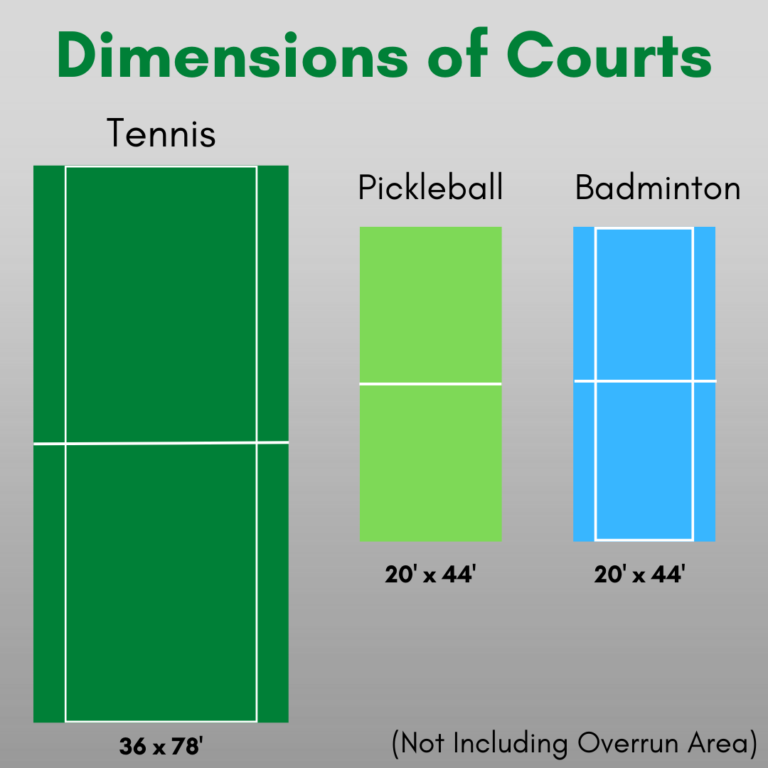
The pickleball court's design encourages players to approach the net with caution. The presence of the non-volley zone invites a tactical dimension to the game, promoting a series of strategic moves rather than relying solely on brute strength or agility. Markings for service areas are minimal, allowing for a seamless flow of play without the confines of complex serving zones.
Badminton court dimensions and layout: Familiar territory?
On the other hand, a badminton court shares similar width and length specifications 20 feet wide by 44 feet long for doubles. However, for singles matches, the width reduces to 17 feet, a critical adjustment that alters gameplay strategies remarkably. Such a design invites players to leverage speed and power more effectively, as rallies often escalate quickly with less space to maneuver.
Badminton courts also feature defined service areas, requiring players to serve from specific sections, which adds another layer of complexity to the game. The careful delineation of court lines denotes where players should position themselves when serving and receiving, promoting a more aggressive playing style devoid of the tactical constraints present in pickleball.
Netting the advantage: How net height impacts gameplay
One of the standout factors that differentiate pickleball from badminton is the height of the nets. The impact of this single feature reverberates through the very fabric of gameplay, influencing not only how points are scored but also the skills players must hone to excel in each sport.
Net height in pickleball vs. badminton
The pickleball net stands at 36 inches high at the sidelines and 34 inches at its center relatively low, considering the game dynamics. This height allows for various shot styles, including dinks, drop shots, and strategic volleys while encouraging players to think creatively about placement and timing. Since players cannot volley while standing in the non-volley zone, the lower net height promotes finesse and tactics that focus on controlling the game rather than overpowering it.
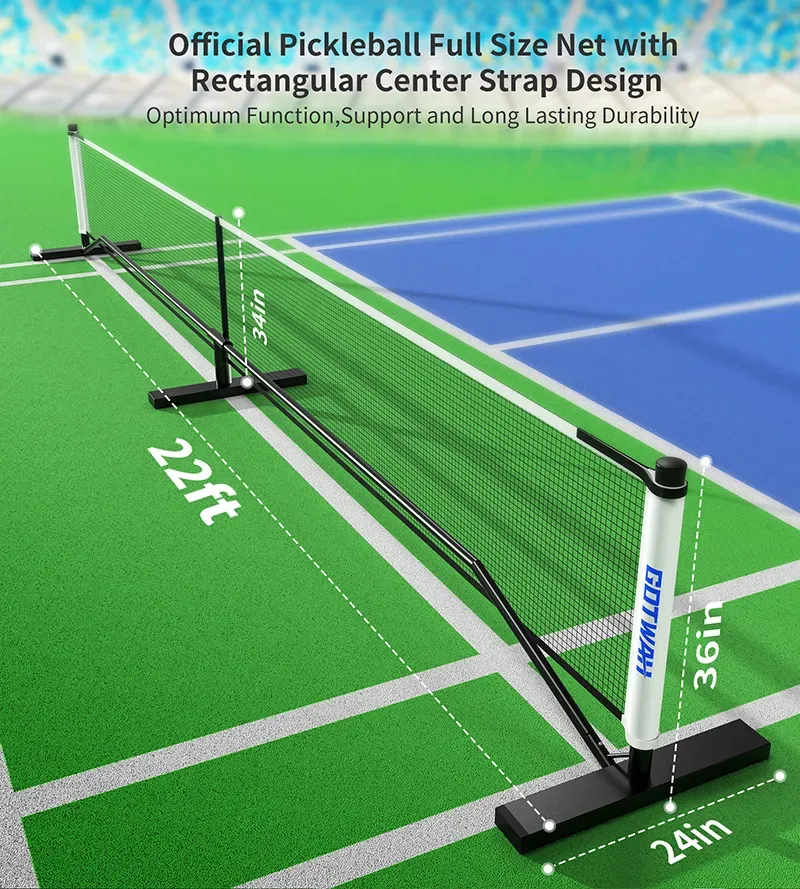
In contrast, the badminton net is significantly taller, measuring 5 feet 1 inch at the edges and 5 feet in the center. This height advantage accommodates powerful smashes and fast-paced exchanges, demanding quick reflexes and agility from players. With the net standing higher, players are incentivized to develop killer serves and powerful attacks, turning every rally into an electrifying showdown of speed and precision.
Paddles vs. rackets: Choosing the right weapon
For badminton players eyeing a transition into pickleball, perhaps the most notable difference lies in the equipment used. The choice of weapon can dramatically influence a player's style and adaptability to a new sport. Understanding the fundamental distinctions between pickleball paddles and badminton rackets is essential for a smooth transition.
Finding the right pickleball paddle for badminton players
Pickleball paddles are typically wider and more solid than badminton rackets. Crafted from various materials such as wood, composite, or plastic, these paddles come in distinct weights, grip sizes, and designs tailored to different play styles. For badminton athletes, choosing the right paddle can enhance both their performance and comfort on the court.
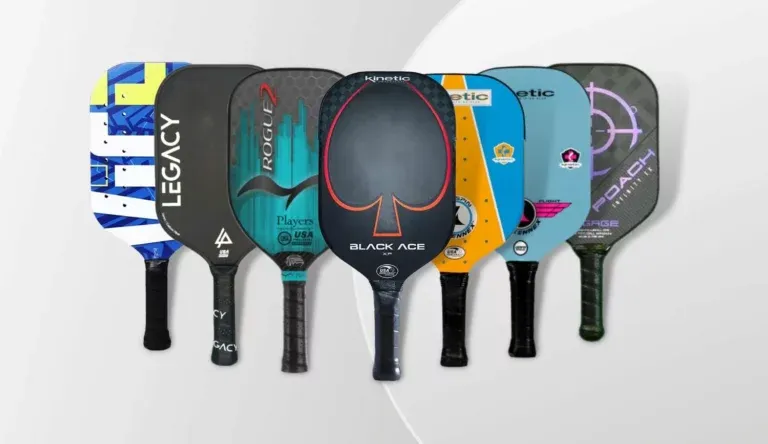
Badminton rackets are generally lighter, designed for swift movements and rapid shots, while pickleball paddles allow for a balance between power and control. A player's familiarity with grip size and weight is imperative, as these elements can significantly affect their ability to perform nuanced shots like dinks or drives. Considerations based on personal preferences and playing style will become a crucial aspect of selecting the right equipment in this crossover.
Ball vs. shuttlecock: Adapting to a different flight
As players advance from badminton to pickleball, one significant aspect they must adapt to involves the object used in gameplay. The flight characteristics of a pickleball compared to a shuttlecock introduce a new layer of finesse and understanding of how shots behave in each sport's unique context.
The characteristics of pickleballs and shuttlecocks
Pickleballs are made from durable plastic and feature holes on the surface, allowing them to travel with more stability and predictability through the air. Their slightly heavier weight and solid structure mean that players can hone lateral movements and control more effectively. The predictable trajectory makes it easier for players to anticipate and react during rallies, ultimately leading to a different pace of play.
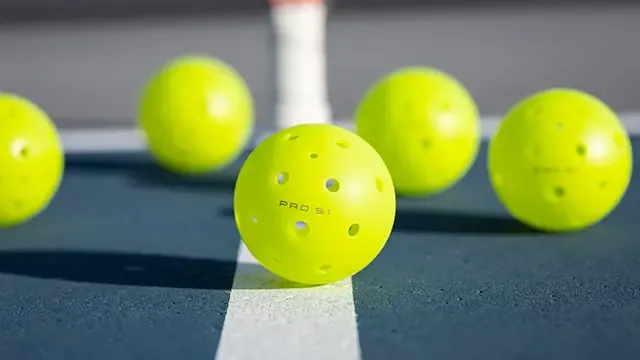
Conversely, shuttlecocks, commonly referred to as "birdies," are much lighter and designed to flutter, creating varying flight patterns depending on the force exerted. The aerodynamic nature of shuttlecocks introduces an element of unpredictability that demands keen reflexes and instant adaptations to shot selection. Players transitioning to pickleball must recalibrate their expectations regarding the speed and dynamics of the ball, adopting new strategies to harness its unique flight characteristics.
Serving up a challenge: Understanding the rules
As with any sport, the rules governing play can often delineate the experience between two games. While pickleball serves up its own unique challenges, badminton players must familiarize themselves with the distinct regulations that dictate how each game unfolds on the court.
Mastering the pickleball serve: Tips for badminton players
In pickleball, serves are executed using an underhand motion and must land in the designated service court diagonally opposite the server. This requirement emphasizes placement and accuracy, contrasting with badminton's more flexible serving dynamics. Understanding the distinct serving styles and the penalties associated with faults such as failing to send the ball over the net or into the correct service area are paramount for effective gameplay.
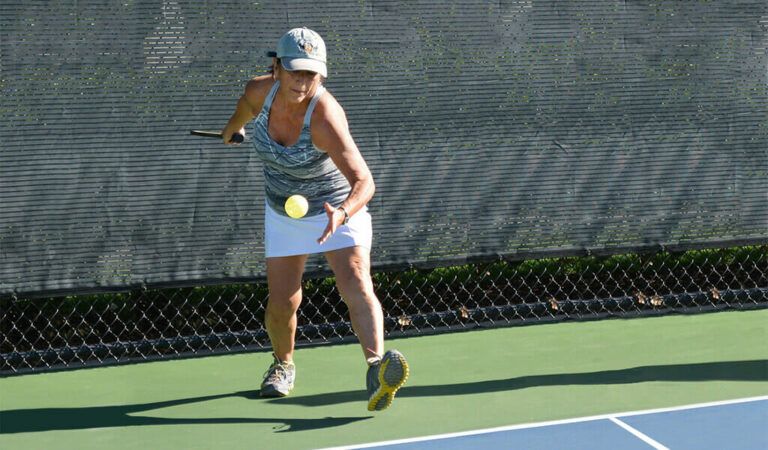
For badminton players transitioning into pickleball, honing their serving technique is critical, particularly in mastering the delicate balance between power and precision necessary for successful serves. Adapting to these rules ensures that players can maintain constant pressure on their opponents, allowing them to establish a tactical gameplay rhythm from the first point.
The pace of play: Strategy vs. speed
Both pickleball and badminton carry their unique cadence, shaped by their dimensions, rules, and overall design. This contrast becomes evident as players navigate each game, requiring them to adjust their approach and mental outlook in order to excel.
Applying badminton tactics to pickleball
In badminton, players often rely on swift movements and quick reflexes to respond to powerful shots. Conversely, pickleball rewards those who can master strategic placement and anticipate their opponents’ actions. As a badminton player ventures into pickleball, they will find that while their agility remains a crucial asset, developing a nuanced understanding of shot placement and strategic dinking becomes equally important.
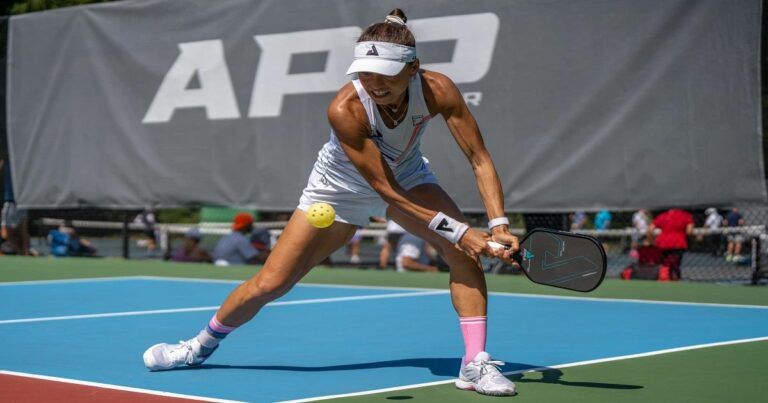
To successfully transition, players can utilize their court coverage skills from badminton to dominate pickleball matches. Being able to read the game and predict opponents' moves allows for effective shot selection, ultimately gaining a competitive edge. The cognitive aspect of gameplay will become increasingly vital, pushing players to weave strategy with their innate physical abilities for a harmonious approach.
Leveraging your badminton skills: A head start in pickleball
For seasoned badminton players, the transition to pickleball is not merely a leap into unknown territory but an opportunity to leverage their existing skill set. Many intrinsic skills can contribute significantly to a player’s effectiveness on the pickleball court.
Transferable skills: Hand-eye coordination and reflexes
Attributes like hand-eye coordination, reflexes, and court awareness developed from years of badminton practice serve as valuable assets when making the switch. These skills are essential components of both sports, enabling players to anticipate opponents' shots while refining their own.
Moreover, agility cultivated through swift movements in badminton significantly enhances a player's lateral and vertical capabilities in pickleball. As quick reactions play a crucial role, athletes should feel confident transferring their prior experiences, which can meaningfully impact their overall performance in pickleball.
New skills to master: Taking your pickleball game to the next level
As players embrace their new journey, mastering specific skills unique to pickleball will become essential. While many lessons from badminton can apply, deeper mutual learning will further elevate a player’s overall game.
Expanding the toolkit: Dink shot and advanced tactics
One of the primary skills badminton players must master is the dink shot, an essential element of pickleball gameplay. Administering this soft, strategic touch requires patience and precision, forming the bedrock of effective shot placement in pickleball. Furthermore, excelling in volleying and navigating strategies related to the non-volley zone opens avenues for advanced tactical play.
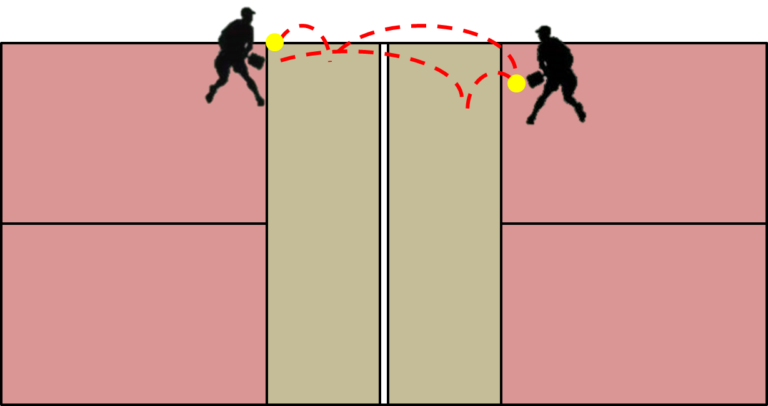
These advanced pickleball moves build upon the foundation already set by a badminton expert, laying the groundwork for continued development in a hybrid athletic landscape. Embracing new skills will lead to a more enriched, fulfilling experience on the court, creating an exciting progression pathway.
From smashing to dinking: Adjusting your physical game
Transitioning from the power-driven world of badminton smashes to the finesse-focused nature of pickleball can present physical challenges. As players adapt, understanding their bodies' requirements in each sport will bear significant benefits.
The fitness requirements of pickleball
While pickleball is a low-impact exercise compared to badminton, it still demands stamina, agility, and a unique blend of physical conditioning. Training regimens may need to shift, focusing more on endurance and precision rather than flat-out speed and explosive strength.
By embracing cross-training activities, players can nurture their physical fitness, allowing their bodies to adapt to the demands of pickleball without compromising the skills honed in badminton. This dual approach ensures that as players refine their game, they remain agile and ready to tackle challenges across sports.
Joining the pickleball community: Finding your place
Like many sports, pickleball is not merely about competition; it's also about the sense of community that fosters camaraderie and sportsmanship. Transitioning into this vibrant world can be a refreshing outlet for badminton players seeking to connect with others who share similar interests.
Cultivating a supportive network
Joining local pickleball clubs or groups creates opportunities for social interaction, engagement, and personal growth within the sport. As players learn to navigate this unique environment, they often find themselves immersed in a culture that emphasizes inclusivity and recreational play, allowing them to forge lasting relationships with fellow enthusiasts.
Building connections becomes invaluable as players further explore adaptation and integration into pickleball's communal sphere. These networks not only facilitate skill enhancement but also enrich the overall experience, reminding players that fun remains at the heart of the game.
Pickleball: A strategic challenge for the badminton mind
At its core, pickleball embodies a unique blend of strategy and physicality that can captivate the badminton mind. Embracing the challenges presented challenges enhances one's growth as an athlete, fostering resilience and adaptability within the dynamic landscape of sports.
Mental game strategies in pickleball
The mental intricacies of pickleball often parallel the fast-paced tangle of badminton rallies, where anticipation, shot selection, and strategic depth marry to create thrilling exchanges. By understanding these nuances, athletes can bolster their tactical thinking and raise their competitive spirit.
If skilled badminton players share their experiences and insights with one another during this crossover, they slowly begin to grasp how mental fortitude can shape outcomes. Building a mental game that optimizes reflexes and tactical awareness elevates their potential and embraces the beautiful complexity of pickleball.
In conclusion, while pickleball and badminton courts may share similar overall dimensions, the differences in net height, gameplay dynamics, and specific court features profoundly influence their respective sports. For a badminton player, the transition to pickleball requires not only an understanding of these variations but also an embrace of new skills and strategies that promise to enhance their overall athletic journey. Embracing this unique challenge can lead to a fulfilling and enriching experience, blending the best of both worlds.










